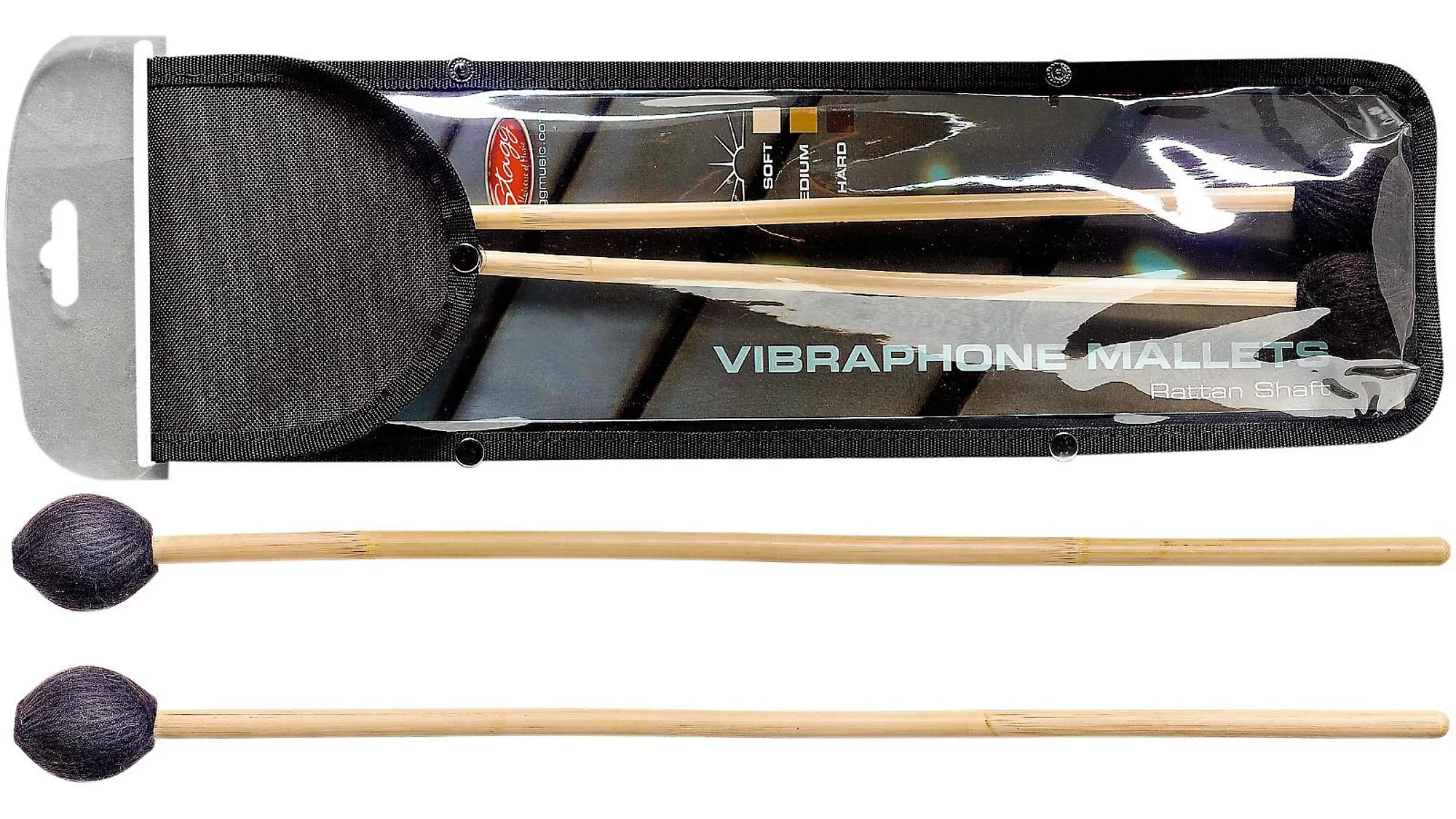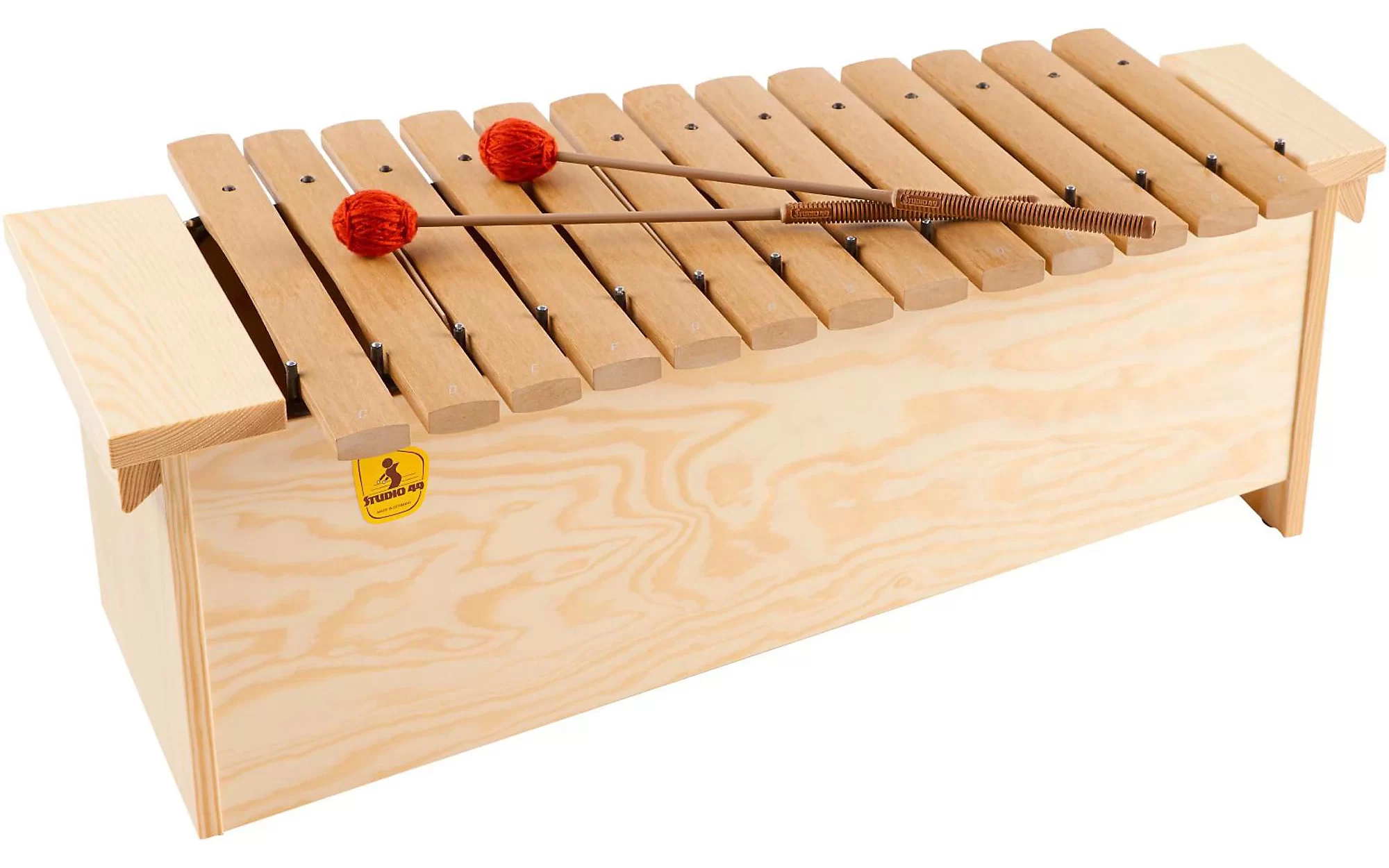Beginner’s Guide to Playing the Xylophone: Unleash Your Musical Talent
Discovering the joy of playing the xylophone can add a new dimension of musicality to your life. This modest yet charming instrument boasts a range that can capture an array of tunes, from the simplest melodies to complex arrangements.
As a beginner, you might find the xylophone to be an accessible and satisfying introduction to the world of music. With its clear, bright tones and visually intuitive layout, you’re able to see the relationship between notes and develop an understanding of musical structures in a tactile, engaging way.
This article contains affiliate links. If you make a purchase through a link on our site you are supporting our continued efforts to educate people like you in finding new and rewarding hobbies. Thank you!

Embarking on your xylophone journey requires some basic knowledge, starting with how to properly hold the mallets to produce the best sound. Each bar on the xylophone corresponds to a specific note, much like the keys on a piano, and with practice, you’ll learn to strike these bars with precision and musicality.
By focusing on technique and rhythm, you’ll soon be able to play a variety of music genres that resonate with you, whether that’s classical, contemporary, or something a bit more unconventional.
To support your learning, there are resources available that offer structured guidance, from helpful tips on posture to mastering the first simple songs. Comprehensive beginner’s guides provide step-by-step instructions, while video tutorials can offer visual and auditory examples to aid your practice.
Starting to play the xylophone can be a deeply rewarding experience, offering not just musical enjoyment, but also the potential for creative expression and personal growth.
Understanding the Xylophone

Your exploration into the world of xylophones begins with a grasp of its rich history, the variety available to you, and the crucial components that make up this unique instrument.
History and Evolution
The xylophone has a global heritage, with early versions dating back to ancient Africa and Asia. Evolving over centuries, it integrated into both folk and classical music, growing in popularity across Europe by the 19th century. Today’s xylophone bears the influence of its diverse journey in its construction and the music it creates.
Types of Xylophones
There are several xylophone variants that vary in size, range, and sound:
- Orchestral xylophones typically feature a range of 3.5 to 4 octaves.
- Marimbas, a cousin to the xylophone, offer deeper tones with resonators attached to each bar.
- Balafons and gyil are traditional African instruments similar to the xylophone but often made with natural materials and gourds as resonators.
Understanding the different types of xylophones can assist you in selecting the one that suits your musical aspirations.

Component Overview
A xylophone consists of the following key components:
- Bars: Tuned wooden bars arranged in order like piano keys.
- Mallets: Used to strike the bars, which can have heads made of rubber, wood, or plastic.
- Frame: Holds the bars in place and can be made of wood or metal.
- Resonators: Tubes that hang below the bars to amplify sound.
Each of these components affects the overall sound and playability of the instrument.
Setting Up Your Xylophone

Before you begin playing, setting up your xylophone properly is crucial. This includes selecting the best mallets for your needs and understanding how to care for the instrument.
Choosing the Right Mallets
Your choice in mallets can greatly affect the sound of the xylophone. Hard mallets made of materials like plastic or metal produce a brighter, more pronounced ping, while softer mallets typically made of rubber or yarn offer a warmer tone. For beginners, it’s advisable to start with a medium-hard rubber mallet, which provides a balanced sound suitable for learning a range of music.

Proper Instrument Care
Taking care of your xylophone will ensure it lasts and continues to produce the best sound quality. Always store your mallets separately when not in use to prevent damage to the xylophone keys. Regularly wiping down the keys with a dry cloth will remove any dust or residue. It’s also important to check for loose screws on the frame and tighten them as needed to prevent any rattling sounds during play.
Fundamental Techniques

Mastering the xylophone involves familiarizing yourself with key playing techniques. Proper grip and posture set the foundation, while precise striking methods enable clear tone production. Learning scales and basic melodies will further develop your musical skills on this instrument.
Basic Grip and Posture
Grip: Hold the mallets with a relaxed but firm grip, using your thumb, index, and middle fingers. Your palms should face each other, with the mallet shafts resting between your index finger and thumb. This grip is crucial for flexibility and control.
Posture: Stand or sit straight with the xylophone positioned at waist height. Maintain a comfortable distance, allowing your arms to move freely without strain.
Striking Techniques
Accurate Strikes: To produce a clear tone, strike the center of the wooden bars with the mallet’s head. Avoid hitting the edges or the nodes (the bars’ support points) for the best sound.
Dynamic Control: Use varying degrees of force to elicit different dynamics, from soft (piano) to loud (forte). Soft strikes for mellow passages increase intensity when the music demands more volume.
Scales and Basic Melodies
Practicing Scales: Learn and practice scales to familiarize yourself with the layout of notes and to improve your dexterity. Start with the C major scale, since it has no sharps or flats, making it simpler to learn.
Melody Basics: Begin with simple melodies that use the notes of the scales you’ve learned. This reinforces your knowledge and helps you to integrate musicality into your technique.
Reading Music for Xylophone

Mastering the xylophone begins with the ability to read sheet music. This skill will allow you to interpret melodies and rhythms intended for this percussive instrument.
Understanding Musical Notation
To play the xylophone, you’ll initially encounter the treble clef, which signifies higher pitch ranges where xylophone notes typically lie. Notes are represented on a staff, which consists of five lines and four spaces. Each line and space corresponds to a different pitch; for xylophone, these often include C, D, E, F, and G as starting notes. Sharps (♯) and flats (♭) may modify these pitches.
Rhythm and Timing
Music for the xylophone isn’t just about pitch, but also rhythm. Whole notes, half notes, quarter notes, eighth notes, and sixteenth notes dictate how long a note is held. The rhythm is guided by the time signature, located at the beginning of a piece. The time signature tells you the number of beats in each measure and which note value counts as one beat.
Interpreting Xylophone Sheet Music
Reading xylophone music involves connecting note pitches with their rhythmic values. Xylophone sheet music will typically display notes on the treble clef staff with specific note heads for striking the bars. Additionally, it may include special notation for techniques unique to the xylophone, like rolls or glissandos. Your ability to link what you see on the page to the corresponding bars on the xylophone will grow with practice.
Practice Exercises

To excel in playing the xylophone, incorporating specific practice exercises into your daily routine is crucial. These exercises will enhance your control, timing, and familiarity with the instrument, allowing for a more fluid performance.
Daily Warm-Up Routines
Begin every practice session with a warm-up to prepare your muscles and your mind for the exercises ahead. Start with simple scales to get comfortable with the layout of the xylophone. Your warm-up could include:
- Major and minor scales: Play each scale slowly, focusing on evenness and tone.
- Long note exercises: Hold each note for a full breath to work on consistent striking.
Coordination and Dexterity Drills
After warming up, proceed to drills designed to improve hand-eye coordination and dexterity. These drills will help you navigate the xylophone’s bars with precision:
- Four-mallet drills: Practice holding and using two mallets in each hand, starting with basic strokes and advancing to independent movements.
- Crossing exercises: Work on crossing one hand over the other to play non-adjacent bars, aiming for smooth transitions.
For visual examples and more structured practice exercises, online resources such as Mastering Xylophone: How to Play Xylophone can be beneficial. Additionally, follow exercises from learning platforms like Learn Basics of Playing a Xylophone for video tutorials on effective warm-ups and drills.
Playing Your First Song

Selecting an easy song and approaching it with a structured learning method are key to making your first xylophone experience enjoyable and successful.
Simple Song Selection
When you are beginning, choose melodies that are familiar and have a limited number of notes. “Mary Had a Little Lamb” is a perfect start because it consists of just a few notes and has a straightforward rhythm. This song strengthens your basic skills without overwhelming you. The following is an example of a song with a simple melody:
- C – E – D – C – E – D – E – B – D – C – B – A…
Each letter represents the note you should play, with the notes you play more than once in quick succession being highlighted in bold.
Step-By-Step Learning Process
To effectively learn your selected song, break down the process into manageable steps:
- Familiarize Yourself with the Notes
- Identify and locate the notes that make up the song on your xylophone.
- Understand the Rhythm
- Clap along to the rhythm or sing the melody to internalize the tempo before playing.
- Practice Striking Technique
- Use a relaxed grip and strike the center of each bar for the best sound.
- Hands Coordination
- Start with one mallet if necessary and gradually progress to using two to improve coordination.
- Repeat Small Sections
- Perfect each small section of the song before trying to play it all the way through.
Take your time to master each step before moving to the next. Patience and practice are your allies in this learning journey.
Enhancing Your Skills

As you become more proficient at the xylophone, adjusting your playing to include dynamics and expression will help you stand out as a musician. Mastering advanced techniques will add to your skill set, and developing a solo repertoire will showcase your personal style.
Incorporating Dynamics and Expression
To elevate your xylophone performances, you need to focus on dynamics and expression. Begin by experimenting with the intensity with which you strike the bars to understand the range of volumes from pianissimo (very soft) to fortissimo (very loud).
Expression is about emotion and storytelling in music, which can be conveyed through tempo variations and dynamic contrasts. Pay attention to the marks on your sheet music that indicate dynamic changes and strive to execute them with precision.
Advanced Techniques
Progressing further, you should explore advanced techniques, like four-mallet playing, which significantly expands your harmonic and melodic possibilities.
Another technique to consider is the roll, where you quickly alternate strikes on a bar to create a sustained note effect. Learn to play glissandos by dragging your mallet across multiple bars for a unique sound. These techniques will require consistent practice to execute correctly.
Solo Repertoire Development
Developing your solo repertoire is crucial for any xylophonist looking to perform seriously. Select pieces that challenge you and cover a variety of styles and periods to broaden your skills.
Practice pieces like “Yellow After The Rain” by Mitchell Peters for a contemporary feel or “Charleston Capers” by George Hamilton Green for a classic ragtime vibe. The goal here is to build a collection of solos that you can perform confidently and that highlight diverse aspects of xylophone music.
Joining a Musical Community

Embarking on your journey as a xylophonist becomes more enriching when you connect with fellow enthusiasts. Engaging with a musical community can provide support, resources, and opportunities for performance.
Finding Local Groups and Ensembles
- Research Local Music Schools: Many music schools and community centers offer ensemble classes or group sessions where you can meet and collaborate with other xylophone players.
- Attend Local Music Events: Keep an eye out for local performances, workshops, and meet-ups. These are great opportunities to connect with potential groups and learn about ensembles looking for new members.
Online Resources and Forums
- Join Online Forums: Websites like Xylophone Forum are valuable for finding other xylophone players, sharing tips, and asking for advice.
- Subscribe to Newsletters: Sign up for newsletters from xylophone-focused websites to stay informed about upcoming events or new online communities.
- Follow Social Media Groups: Platforms like Facebook have numerous groups dedicated to xylophone players where you can join discussions and even discover local online members.
Frequently Asked Questions

In this section, you’ll find answers to some of the most common questions beginners have when starting to play the xylophone. From basic techniques to choosing the right mallets, these tips are designed to set you on the right track.
What are the basic techniques for playing the xylophone?
The xylophone is played by striking the wooden bars with mallets. Basic techniques include proper grip of the mallets, striking the bars with accurate timing, and learning to produce different dynamics. Begin by practicing single-note strikes before advancing to chords and melodies.
Can you recommend some xylophones that are ideal for new learners?
There are xylophones specifically designed for beginners, featuring durable construction and accurate tuning. The Studio 49 Diatonic Grillodur Xylophone Alto is a popular choice for it’s beautiful sound and quality materials.

How long does it typically take to learn the xylophone?
Learning the xylophone varies for each individual, but with consistent practice, you can grasp the basics within a few months. Proficiency takes longer and depends on your practice routine and musical background. Refer to structured resources like this xylophone basics video for guided practice.
What are some effective practice tips for beginners on the xylophone?
Effective practice tips include setting a regular practice schedule, starting with simple pieces, and using a metronome to maintain steady timing. Break down complicated passages into smaller sections, and focus on clean mallet technique for accuracy and tone quality.
Are there any essential music theory basics one should know before starting the xylophone?
Understanding musical notation, scales, and rhythms are crucial for playing the xylophone. A knowledge of basic music theory can greatly enhance your ability to learn and interpret xylophone music, assisting you in your practice sessions.
What types of mallets should a beginner xylophonist use?
Beginners should opt for medium-hard rubber or plastic mallets as they produce a bright tone and are versatile for various types of music. As you progress, you’ll discover a range of mallets, with different materials and hardness levels, to achieve various sounds and effects.

